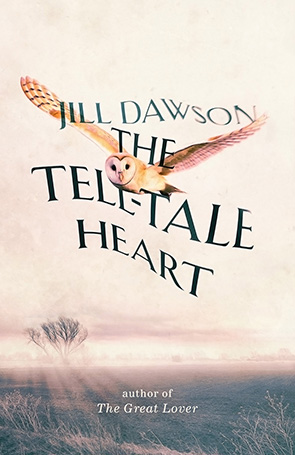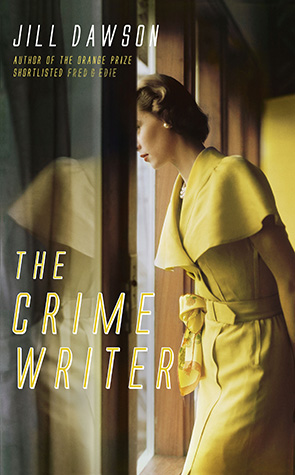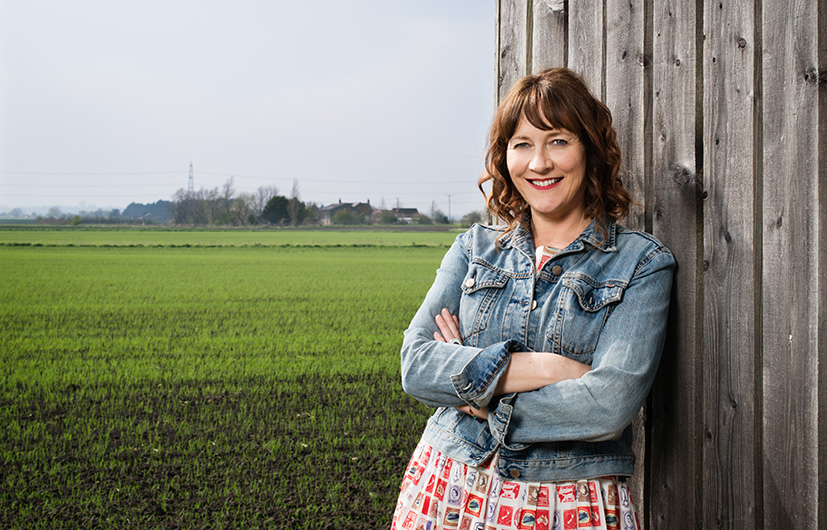In the bicentenary year of The Little Port Riots, Vanessa Blackledge visits Jill Dawson to discuss her novel, ‘The Tell-Tale Heart’, which recounts this almost-forgotten story
Driving across The Fens on a pale March day is like driving through your mind in the moments just after waking; the detritus of your dreams still scattered across the landscape, uncluttered and strangely fresh. We’re visiting novelist Jill Dawson, to talk to her about her last book, The Tell-Tale Heart, in which The Fens are more than a setting, but a character in themselves.
The windows of her eco home are large and curtain-less. They stare out over miles of freshly tilled ‘black-gold’ earth that this part of the country is famed for. As she pours our matching black coffee she expresses her love of the landscape. “I amaze myself with how much I love The Fens. It chimes so deeply with characteristics of my own. The unlovely Fens. People either find it oppressive, this level of space, or they find it uplifting and liberating, and I fall into that camp. It’s like a blank page.”
“I amaze myself with how much I love The Fens. It chimes with characteristics of my own”
There are plans to remove the rows of pylons that march across the British countryside, and we agree that here, if nowhere else, their absence would be a loss to the landscape. “Why do you just want lakes and sunrises? It sort of annoys me as an idea. Isn’t the world lovely and interesting in all its variants?”

The Tell-Tale Heart is a huge novel that reaches far beyond its 242 pages. It tells the story of Patrick, a washed-up professor who’s squandered his life and health but who, nonetheless, is a candidate for ‘beating heart surgery’. He receives the heart of a 16-year-old Fen lad, Drew, who’s a descendent of one of the families involved in the Littleport Riots of 1816. Haven’t heard of them? You’re not alone. This footnote in history has been largely ignored, but the hangings and deportations that resulted from a small moment of unrest scarred the tight-knit community, and those scars echo around Littleport to this day.
“The myth about The Fens is that, because it produced Cromwell, it’s rebellious. So there’s that idea of peoples’ genetic imprint or ancestral characteristic being about a place, but I also think of other more straightforward ones; of feelings that are passed down.” Shortly after the book was published, a study from the New York Mount Sinai Hospital gave us the first substantial evidence that trauma can be imprinted onto our genes and passed on. This epigenetic impressioning may have been recently ‘proved’ by science, but it’s something that writers and artists have been telling us for years. “I’ve always felt it just makes 100{b486c5a37ab2d325d17e17d701cb2567b1ecd1814e8ceb33effa2a4f1f171d46} perfect sense. I don’t really need proof.”
As the book progresses, the young organ donor’s heart seems to act as more than a pump in Patrick’s chest; there’s something of the lad’s inherited trauma, his enquiring mind desperate for education, and his rebellious nature that washes through Patrick’s blood, filling his dreams with alien visions and a sense of morality that’s long-since deserted him. “It’s a book about masculinity. I have sons; I’m very interested in masculinity, not necessarily as a natural thing but as a construct. One construct is that men are always competent and in control; they’re never victims, they’re never vulnerable. And that’s clearly not true. I wanted to show that white, working-class boys are quite a feared and reviled group, and that some of that might be operating in the harsh judgments metered out to them.”
The book crosses life, death, class, culture and century and attempts to tell a complex story. Try too hard to make sense of it and you risk losing the essence of reality; the mosaic of collision and course. “Joyce Carole Oats said, ‘Fiction shouldn’t make sense.’” So we stop trying.
As our time together comes to an end we’re drawn back to the landscape laid out before us. “In my field you’ll normally see a tractor. That’s how I think of The Fens – an agricultural landscape, not a beautiful place where house prices are high and people come because they’ve got lovely village schools. No, that’s not The Fens and that’s why it interests me. Many Cambridgeshire people don’t come out this way and don’t know the area north of Ely; it feels quite foreign to them.

“You know how children sometimes draw the sky and the landscape not meeting and there’s this mysterious bit in-between that they forget to colour in? That’s The Fens. It’s like an empty ‘betwixt and between.’ That’s a genuine quote from some rebels. This area’s not quite real, and I love that idea. There aren’t that many landscapes you can say that about.”
Jill Dawson’s new novel, The Crime Writer, is about the novelist Patricia Highsmith and is set in Suffolk. It will be released on 2 June 2016, by Sceptre. Hardback £18.99.
Readings with Jill Dawson
26 May – The Cambridge Literary Festival, time and venue TBC
9 June – Topping Bookshop, Ely, 7pm
Gold Dust
Gold Dust is a scheme Dawson started eight years ago, enabling new and emerging writers to be mentored one-on-one by established novelists. “I set it up because people I’ve taught always want one-to-one time. So it was an answer to requests from students. The second reason is that it’s the way I like to work – with one editor, not twelve people all telling me different things.”

